Keep the Tail Wagging is supported by pet parents. I occasionally earn a commission (at no additional cost to you) when you click through an affiliate link to one of my favorite products. Thank you for your support. Read More
In 2022, I was introduced to Rotational MonoFeeding, and for five weeks, I followed this new (to me) raw feeding model with my dogs; I did modify a portion of this diet that I disagreed with (more below). This raw feeding model, like others, attempts to replicate the feeding habits of wolves and wild dogs.
Please note that no scientific studies support the validity of this raw feeding model. This doesn't concern me because philosophy precedes science. In other words, people come up with a theory and then follow it up with scientific studies that test it. However, I did attempt to find science that supports the tenets of RMF as I wrote this blog post.
After reading the book, several segments of RMF made a lot of sense. However, I didn't agree with all its tenets, which resulted in a disturbing interaction with its founder, Nora Lenz. This blog post covers my initial thoughts on RMF and the interaction I experienced with Nora Lenz three years later.
What is Rotational MonoFeeding?
RMF is a diet that believes dogs wouldn't naturally eat meat and vegetables on the same day. It's believed that dogs would gorge on meat one day, forage on plants (available fruit and vegetables) several days a week, and fast for a few days. This is the only raw feeding model where a dog owner can feasibly feed their dog meat once or twice a week when on this diet.
What About Fat?
People who follow the rotational monofeeding model believe in feeding a low-fat diet.
In my education in canine nutrition, I have come to understand that dietary fat plays an essential role in a dog's overall health and well-being. While fat is an important energy source and aids in absorbing specific vitamins, excessive intake or an imbalanced fat profile in a dog's diet can contribute to inflammation and certain diseases.
- Obesity: High-fat diets can lead to weight gain and obesity in dogs. Overweight dogs have an increased risk of various health problems, including diabetes, arthritis, cardiovascular disease, and certain types of cancer.
- Pancreatitis: Excessive dietary fat, especially highly processed or fatty foods, can trigger pancreatitis in susceptible dogs. Pancreatitis is characterized by inflammation of the pancreas and can be a serious and potentially life-threatening condition. Recurring bouts of pancreatitis can lead to exocrine pancreatic insufficiency.
- Hyperlipidemia: Certain breeds, such as Miniature Schnauzers, Shetland Sheepdogs, Beagles, and Collies, are prone to hyperlipidemia, an abnormal increase in blood lipid (fat) levels. High-fat diets can exacerbate this condition and lead to complications like pancreatitis or the formation of fatty deposits in the blood vessels.
- Gastrointestinal Disorders: Some dogs may have difficulty digesting and tolerating high levels of dietary fat, leading to gastrointestinal issues such as diarrhea, vomiting, or gastrointestinal upset.
It is important to note that not all dietary fat is harmful to dogs. Dogs require a certain amount of dietary fat for a healthy and balanced diet. The focus should be on providing a well-rounded and appropriate diet that includes essential fatty acids while avoiding excessive amounts of unhealthy fats.
Is Rotational MonoFeeding “Balanced?”
“Despite claims from the veterinary profession to the contrary, we don't know what optimal nutrient levels are for dogs. We don't even know what optimal levels are for humans!” – page 41.
READ: NY Times, Is There an Optimal Diet for Humans?
RMF is as balanced as a DIY Prey Model or DIY BARF Model raw diet that doesn't utilize meal formulation software or nutrient testing. While I appreciate the need to meet a dog's nutritional needs, I also question the belief that we know what our dogs need. We have a big piece, just not the entire puzzle.
The RMF community believes that no one knows what a dog needs nutritionally, and by modeling a dog's diet after wild dogs, we're coming as close as we can get.
“The idea of ‘balance' has been used to make home feeding far more complicated than it needs to be. Canine ‘nutritionists' and ‘holistic' vets have been the biggest marketers of this myth, and the Prey Model Raw (PMR) and Bones and Raw Food (BARF) feeding community have adopted it as well, not realizing the effect it has on dog owners who would like to feed [raw dog food] but are too confused or intimidated to know where to begin.” page 7
Do I agree?
Yes and no. I don't think anyone knows exactly what a dog needs nutritionally – all of the software and formulation services available are getting there, but it's not 100%. However, I don't believe in modeling the diet I feed my dogs after that of wild dogs because my dogs aren't wild. My dogs…
- don't get as much exercise as wild dogs
- have been exposed to vaccinations, unlike wild dogs
- experience the stress of living with humans
Looking at how wild dogs eat is a helpful start to better understanding how to model their diet. However, that's not where it ends.
According to the RMF book, “PMR and BARF feeders too often assume when their dogs don't do well that the problems are caused by genetics, previous vaccinations, or nutrient deficiency. Assuming incorrectly that they already doing everything correctly with the diet means that rather than seeking out the real causes of disease (which are almost always dietary in origin) raw feeders will often blame other factors and resign themselves to disease maintenance or symptom management.” page 41
Damn, it's like she read my mind.
I'll address the comment about canine nutritionists and holistic veterinarians further down.
Let's Talk About Rotational MonoFeeding
According to RMF, dogs have only one chamber in their stomach, which those who follow RMF believe means that their digestive system is set up to consume one type of food at a time.
While this doesn't make sense to me (when thinking of my diet and one-chamber stomach), Nora shared something that made sense as I kept reading.
“Digestion is compromised when foods are combined, because the acidic nature of the digestive chemicals required to break down proteins actually neutralize the ones that are required to break down carbs. The cost of feeding more than one food at a time is that the percentage of food utilized is decreased and waste production is increased, which means both food and bodily resources are wasted.” page 27
The increased waste production is the leading cause of disease in dogs (pg. 27 of the book).
This is where the mono-feeding comes in.
There was a time when people believed that eating an alkaline diet was healthier, and someone created alkaline water. The only information I found that promoted this diet for dogs was also promoting an alkaline (high-carb) dog food. #redflags
Although the explanation above helps me understand separating acid-promoting foods from alkaline-producing foods, I couldn't find the science that supports the belief that feeding meat and vegetables separately is beneficial for dogs.
- Acid Producing Foods: meat, poultry, fish, dairy, eggs, grains, processed foods
- Alkaline Producing Foods: fruits, vegetables, nuts, seeds, legumes
Fats fall in the neutral camp.
I continued searching and eventually learned that some professionals believe alkaline water doesn't work because it's neutralized once it hits the acid in the stomach. This aligns with the belief that vegetables are wasted if fed with protein because the benefits the vegetables provide are neutralized.
But is this true? I don't know.
Rotational MonoFeeding and Vegetables
So, if feeding proteins and vegetables together leads to disease and a dog's gut is highly acidic, why feed vegetables?
According to RMF, wild dogs eat prey one day and spend a few days hunting their next meal while snacking on local vegetation. One of the tenets of RMF is to replicate, as much as we can, the diet of wild dogs.
RMF is very pro-fruits and vegetables and doesn't see an issue feeding them to our dogs as long as we separate a plant-based meal from a meat-based meal by at least 12 hours. Some raw feeders who follow the RMF model add a fasting day (or two) between meat and plant days.
The ratios recommended in the book are as follows (the plant-based days are to replicate scavenging):
- 1:1 – 1 plant day, 1 meat day
- 2:1 – 2 plant days, 1 meat day
- 1:2:1 – 1 plant day, 2 meat days, 1 fasting day
- 3-6:1 – 3-6 plant days, 1 meat day
- 1:4:2 – 1 plant day, 4 meat days, 2 fasting days
- 0:7:0 – all meat days
When it comes to feeding vegetables, cooking is better than raw, pureed vegetables because cooking makes vegetables easier to digest. The book also recommends sweet potatoes, yams, peas (and other vegetables), and quinoa (a seed, not a grain). I've always read that wild dogs are opportunistic, so while they may eat more plant-based foods than wolves, which consume a diet primarily of protein, they do better on a protein diet. As do domesticated dogs.
My concern about feeding diet high in plant-based foods is that, over an extended period of time, a dog may become deficient in several nutrients, like taurine, Vitamin B12, and Omega-3 fatty acids (EPA/DHA. Rotational MonoFeeding is a style of feeding dogs; it's not promoted as a temporary diet for sick dogs.
Plant-Based Days
The first week of RMF, I made a mixture of cauliflower rice, chopped broccoli, chopped sweet potatoes (limited), green beans, a little quinoa, and Dr. Harvey's Paradigm. My dogs weren't impressed and responded to this new diet differently.
After the first week, the dogs ate their vegetables with no issues.
According to the book, we should feed 3-10% of our dogs' body weight in vegetables on plant days. I think this far too much, but to give this diet a fair shot, I fed my dogs 3.5% of their body weight in vegetables (approximately 2 lbs. of vegetables on plant days). I found myself hesitant to sincerely follow the rules of RMF because of everything I've learned from other raw feeders and holistic veterinarians, which I acknowledge isn't giving the diet a fair chance.
The book also advises us to listen to our dogs and not add anything to tempt them to eat their vegetables. In the past, I would add an air-dried organ meal topper (from Real Dog Box), bone broth, or fermented fish stock to the dish to get them to eat. But not with RMF. Because wild dogs can go days without eating, it's okay for my dogs to choose not to eat their vegetables.
What About Hunger Pukes?
When I mentioned RMF on my Facebook page, a few people commented about the RMF group encouraging pet parents to ignore hunger pukes and wait for their dog's system to adjust to the new diet.
My dogs will vomit to empty their stomach when they feel unwell. To me, this is a natural response. Hunger pukes are not.
Hunger pukes are stressful for dogs and contribute to an unhealthy system. When I began incorporating fasting days, I started with a modified fast, feeding raw goat's milk or kefir instead of a fast of only water. It took a couple of years before I became comfortable with an actual fast (no food for 20-24 hours), and I now do this once or twice a week.
Rotational MonoFeeding and Fat
A nutritionist in the group feeds one plant day a week, and the rest of the week, she feeds meat because this makes the most sense to her. Reading that reminded me that many raw feeders modify the model of their choice to meet an individual dog's needs – franken-prey, franken-barf, and now, franken-RMF.
So, I decided to keep fat in my dogs' diet because I believe this is an integral part of my dogs' diet.
Benefits of Fat for Dogs…
- fat is an excellent source of energy, better than carbs and protein
- fat helps the system better absorb fat-soluble vitamins
- fat helps dogs feel fuller for longer, which is why I feed it when a dog needs to lose weight
- fat helps to fight inflammation
- fat boosts the immune system
- fat supports cognitive (brain) health
- fat helps to boost the metabolism, keeping dogs at a healthier weight
Of course, as mentioned above, too much fat will lead to weight gain and other health issues, especially when combined with a high-carb diet. And, according to RMF, feeding too much fat can lead to inflammation.
“But it is my contention that fat consumption as a whole is what is largely responsible for acute and chronic inflammation in dogs, and decreasing overall fat is what we should be looking to do, not adding different fats to the diet.” page 49
For prey and BARF models, I've been told to limit fat to 5% of a raw food diet (unless you have a highly active dog or you're feeding a keto diet). RMF, on the other hand, believes that dogs should be fed a lean diet, limiting fat as much as possible. So, no coconut oil, raw goat's milk, kefir, eggs, or yogurt. RMF recommends trimming all animal fat (fat and skin) before feeding our dogs.
There are days when my dogs' diet is too high in animal fat, which is offset by lean days. I only trim fat on meat when there is an excessive amount, like the excess fat on duck necks, beef roasts, and pork roasts. I don't cut the skin from whole quail, but I remove excess from duck and chicken.
Does Fat Cause Diabetes?
No! Being overweight can lead to diabetes, and eating a high-fat/high-carb diet will lead to weight gain, which can lead to obesity, which can lead to diabetes. But feeding healthy fats to our dogs doesn't raise their risk of developing diabetes.
- Diabetes: Surprising new role of fat revealed
- Keto Diet and Diabetes: Do They Work Well Together?, Dr. Axe
Rotational MonoFeeding and Supplements
There are two things about RMF that I'm entirely on board with, and they are:
- no one has it right when it comes to balance; I believe most are doing the best they can with the available information
- we over-supplement our dogs, not giving the diet a chance to do its magic before we order pills and powders online
“The practice of supplementing with vitamins, oils, herbs, etc., is not only costly and unnecessary, but also very unhealthful. There are studies being done now that clearly show that subjects that are given supplements actually do much worse health-wise than subjects that are not given them. Dr. T. Colin Campbell references them [studies] in his book Whole.” page 62
When I tried RMF with my dogs, I didn't add any supplements, except Rodrigo's digestive enzymes, which are required. This saved me time during meal times, and it would save me money if I chose to switch to RMF.
However, is it appropriate to remove all supplementation?
While I believe that pet parents new to raw feeding reach for supplementation too quickly, that doesn't mean that supplementation is wrong. We should supplement to address a health issue and cover nutritional deficiencies when whole food isn't an option.
Switching to RMF allowed me to reduce the supplementation in my dogs' diet even more. I realized I was falling into the same trap of reaching for supplementation instead of reviewing my dog's diet when a health issue cropped up.
A Few Questionable RMF “Rules”
So, while I love the idea of a new raw feeding model, rotational monofeeding isn't for me.
- Dogs should be fed a lean diet that is low in fat: I believe there are healthy fats that are beneficial for my dogs. Formulating their diet allows me to better control the amount of fat they consume, keeping it at a healthy level for each of them.
- Veterinarians promote unhealthy things to keep our dogs sick: I don't believe that veterinarians are in it for the money—I was surprised by the number of anti-veterinarian messages in the book. While some veterinarians don't support raw feeding or fresh food (cooked, etc.), I have been fortunate to meet more pro-dog veterinarians open to raw feeding. However, just because I've had more positive experiences than negative ones, I don't want to take away from someone's experience with a pet professional.
Whenever I hear backlash about veterinarians, I think of this video by a veterinarian giving a TED Talk about her day:
- Sweet potatoes are great for dogs on plant days: I prefer limiting organic sweet potatoes to treating diarrhea and loose stool. Thankfully, sweet potatoes are low glycemic (54). The RMF model recommends cooked sweet potatoes because they'll add some sweetness to the meal that replicates overripe fruit, which is “universally loved by dogs.” I don't know if wild dogs will eat sweet potatoes, but the point of adding them is to replicate overripe fruit. Since berries and other fruits aren't ripe year-round, we feed sweet potatoes in their place.
- Smelt are raw sardines; canned sardines should NEVER be fed: I had to look this one up. Smelt are not the same as sardines; smelt look similar to sardines (and anchovies) but are not the same fish. Of course, Mr. Google could be wrong here, but I believe him. “Smelt” typically refers to small fish found in freshwater, often used for food. They are known for their silvery color and delicate flavor. On the other hand, “sardines” are a larger group of fish found in fresh and saltwater. Read More: Smelt vs. Sardines — Health Impact and Nutrition Comparison
The book also states that we shouldn't feed canned sardines because cooking makes the protein and bones indigestible. I beg to differ. From experience, the bones in canned sardines (if there are any) are mushy. Of course, this is just my experience with products available in my area of the country.
- Eggs are bad for dogs: According to the book, while eggs make a regular appearance in many raw diets, they should only be fed a couple of times a week due to the high fat, and “because certain proteins in eggs interfere with the absorption of some nutrients.” page 79. I think the book is referring to overfeeding egg whites or feeding egg whites only. The egg whites can act as a biotin blocker, so I lightly cook (poached, sunny side up, soft-boiled) the eggs I feed my dogs. Cooking deactivates the biotin blocker in the egg whites. To address the fat, I reduce the other ingredients in the bowl when adding eggs to the meal.
- Dogs are omnivores, not humans: I believe that dogs are opportunistic carnivores. Just look at the teeth and their counter/garbage can tendencies. In the book, the author references a study…“One study of Yellowstone wolves found that their consumption of prey dropped by 25% during the summer months when other foods (fruits, primarily ( were more accessible. Even when the wolves in the study had abundant food, they only ate fresh prey every 2-3 days on average.” page 41
According to the National Park Service (NPS.gov), the following is what has been documented about the feeding habits of Yellowstone wolves.
- Feeding habits: generalist carnivore; scavenges when possible and has been known to eat small amounts of vegetation
- Primary food sources in Yellowstone: Winter: elk (>96%), bison (3-4% and increasing in recent years; deer (1.5%); Spring: elk (89%), bison (7%), deer (7.1%); Summer: elk (85%), bison (14.1%), deer (<1%)
- Elk killed per month per wolf: 1.83 elk/wolf/month during winter
- Elk killed per year per wolf: 18-22 elk/wolf/year (all age classes, including neonate calves)
- Kilogram per wolf per day needed for survival: 3.25 kg/wolf/day; can eat 15-20% of body weight in one sitting
This contradicts what I read in the book. But, then again, dogs aren't wolves. The classification of dogs is a common dispute in the raw feeding community.
Is Rotational MonoFeeding Safe for Dogs?
Rotational MonoFeeding has mixed reviews with devoted followers who believe the diet saved their pets and prevents/reverses disease. While others believe RMF is based on pseudoscience and allegedly promotes the starvation of dogs, encouraging pet parents to treat serious illnesses with fasting instead of seeking veterinarian care. The Feeding Raw Facebook group members mentioned ” cult ” several times.
Based on what I've learned about the Rotational MonoFeeding community and my abhorrent experience with the founder, Nora Lenz, I wouldn't recommend RMF as a raw feeding model. I regret promoting it as such on my blog and in my book.
However, I do think she's on to something – she's simply may not be the best spokeswoman.
Fasting Dogs with Cancer
While I'm not a veterinarian or a scientist, my reseach and canine nutritional studies have not shown me that fasting, which is recommended under Rotational MonoFeeding, may be able to prevent, cure, or reverse cancer. But this doesn't mean that Rotational MonoFeeding is the answer. Sadly, this claim will tempt many pet parents who received this devastating diagnosis, and are faced with high veterinarian bills to save a beloved pet.
Cancer isn't caused by diet alone. Cancer is a complex disease involving genetic mutations, abnormal cell growth, and often spread to other parts of the body. While diet can influence health by helping build and maintain a robust immune system, could fasting also prevent or cure cancer?
Studies have shown that fasting can benefit a person's general health throughout their entire life by lowering oxidative stress and inflammation, slowing the aging process and increasing longevity, initiating cellular repair mechanisms, and boosting brain and heart function. Source: National Library of Medicine
Metabolic therapy for cancer, such as the ketogenic diet and intermittent fasting, is all about changing the way cancer cells metabolize to slow their growth and encourage their demise. Cancer cells operate differently than normal cells, relying on glucose, which makes them more susceptible to changes in nutrients and metabolism. With a ketogenic diet and intermittent fasting, we take advantage of these differences by zeroing in on the unique metabolic weaknesses of cancer cells. The ultimate goal is to outsmart and outmaneuver cancer cells to stop them in their tracks.
Plant Based Diet for Pets and Cancer
While many fruits and vegetables offer anti- cancer and aptosis (cell death) properties, the amount we need to feed to reverse or cure cancer is unknown, however, it's more than likely a lot. This possibly explains why the Rotational MonoFeeding diet encourages high amounts of plant-based foods in a dog's diet.
I ofter hear, mostly from myself, that dogs are opportunistic carnivores. But this doesn't mean there isn't a place in their diet for fruits and vegetables. The belief that all carbs feed cancer cells isn't the whole story. Fruits and vegetables contain compounds that can support health and may help the body fight cancer in certain ways — especially as part of a preventative or supportive diet. However, they may not replace treatment for all dogs.
- Antioxidants: Neutralize free radicals (unstable molecules that can damage DNA and potentially lead to cancer).
- Berries contain Vitamin C
- Leafy greens contain Vitamin E
- Carrots and sweet potatoes contain beta-carotene
- Phytochemicals (Plant Chemicals): Biologically active compounds found in plants that have protective effects.
- Broccoli, broccoli sprouts, kale, Brussels sprouts contain sulforaphane, which boosts detox enzymes, may trigger cancer cell death.
- Tomatoes and watermelon contain lycopene, which has been linked to lower risk of certain cancers.
- Apples and berries contain quercetin, which is an anti-inflammatory, and may inhibit tumor growth.
- Fiber: Helps regulate blood sugar and promotes healthy gut bacteria, which in turn influence inflammation and immune response. Fiber may help bind and remove potential carcinogens from the digestive tract.
- Vitamin B9 (folate): Supports DNA rpeair and synthesis; often found in leafy greens.
- Polyphenols & Flavonoids: Reduce inflammation and oxidative stress; found in berries, apples, and many vegetables.
However, the amounts of plant-based foods we need to feed in order to effectively reverse cancer is unknown. I add fruits and vegetables to my dogs' diet regularly for prevention.
Critics of Rotational MonoFeeding
Of course, for every person who applauds Ms. Lenz and Rotational MonoFeeding, there will be critics.
In 2025, I learned more about the practice of Rotational MonoFeeding after a disturbing interaction with Ms. Nora Lenz. It started when I was made aware of a discussion in which Ms. Lenz claimed that I had contributed to the death of my dogs, who had cancer, specifically Scout, because he underwent chemotherapy. Ms. Lenz shared articles from her website claiming that Rotational MonoFeeding can prevent, reverse, and cure canine cancer.
I emailed Ms. Lenz asking her why she would make this statement, which I find cruel and lacking in empathy. As dog lovers, I think we understand the pain of losing our beloved companions, and to see someone blame me for my loss while simultaneously monetizing this tragedy was a shock.
4.1.2025 email to Ms. Lenz: Someone sent screenshots of the horrible things you said about me, insinuating that I killed my dog who had cancer. I have never said anything negative about you or Rotational MonoFeeding. It wasn't for me, but I respect that it works for others. To see you speaking about my dog when you know nothing about that journey is disappointing. I truly admired you and what you brought to the community. Pushing against the grain, and developing an alternative that to help dogs. What did I do besides promote your book and group so others who were interested could learn from you? Why would you say such dark, cruel things about me?
Ms. Lenz responded aggressively, doubling down on her stance that I’m to blame for the death of my dogs. She admitted that she said these cruel words because of her animosity towards me, because she believed I deleted her comment on my YouTube channel. This comment:
After this interaction, several individuals published their experiences with the Rotational MonoFeeding group in the Feeding Raw Facebook Group Feeding Raw on April 4, 2025. Many shared screen captures of questionable advice, including fasting a cat for seven days, using fasting to treat pyometra, and more. Several group members shared their own experiences with Ms. Lenz and her followers, which mirrored my experience.
Final Thoughts on Rotational MonoFeeding
I tried Rotational MonoFeeding, but it wasn't for me. Although I believe Ms. Lenz has an interesting perspective, I can't entirely agree with several of its tenets, and I couldn't give it a fair shot based on what I know about canine health and nutrition. In 2022, I wasn't prepared to discount this model. Today, I strongly discourage people from following Rotational MonoFeeding because:
- The negative experiences from other pet parents raise serious concerns (Yelp reviews).
- Group members have allegedly discouraged pet parents from visiting the veterinarian when pets are sick (screen captures).
- The founder of this community is, in my experience, abusive and doesn't tolerate different perspectives.
Of course, there's always a bigger story behind every conflict. However, after seeing so many people share the same story, providing evidence of their experience, combined with my own experience, I cannot recommend Rotational MonoFeeding.
I respect everyone who has a passion to help pet parents make their dogs healthier and extend their lives; I can't support someone who hides behind their passion to justify spitting on the memory of a beloved pet and judging a pet parent during a sensitive time, like a cancer diagnosis or death of a dog. Ms. Lenz doesn't know me or my dogs. She wasn't there when my dog, Scout, was diagnosed with lymphoma. She wasn't there when I had to make tough decisions about his treatment. She wasn't there to celebrate when he went into remission, and she wasn't there on that sad day when my dog succumbed to the cancer and passed away in my arms.
But I was there every day. And I do not believe Rotational MonoFeeding would have saved my dog.
- Discussion with Ms. Lenz's comments about my dog and his cancer treatment
- Disscussion about Rotational MonoFeeding and the alleged abuse people have experienced/witnessed
These are screen recordings on a private drive. You must request permission to view.
An Alternative to Rotational MonoFeeding
For pet parents looking for a diet designed for dogs with cancer, there are many holistic veterinarians producing content, publishing books, and offering consultations on how to approach canine cancer through diet. I have a copy The Dog Cancer Survival Guide, which I believe is a must for pet parents.
Dr. Sue Ettinger — also known as “Dr. Sue Cancer Vet” — is a board-certified veterinary oncologist who advocates for evidence-based cancer treatment alongside supportive care, including nutrition. She does not promote extreme diets or “miracle cures,” but she does offer clear guidance on how to optimize your dog’s diet during cancer treatment.
Here’s a breakdown of what the Dog Cancer Diet looks like, based on Dr. Ettinger’s approach and the broader recommendations she supports:
The Dog Cancer Diet (Dr. Sue Ettinger-Inspired)
Goals of the Dog Cancer Diet:
- Support the dog’s immune system
- Maintain (or increase) lean body mass
- Reduce inflammation
- Minimize cancer-fueling nutrients (like simple sugars)
- Maximize quality of life
Key Components of the Dog Cancer Diet:
1. High-Quality Protein
- Protein is critical for maintaining muscle mass, healing, and immune strength.
- Sources: lean meats (chicken, turkey, beef), fish, eggs, cottage cheese
- Cancer dogs often need more protein, not less.
2. Moderate-to-High Fat
- Many cancer cells rely more on glucose than fats, so higher fat may “starve” tumors (in theory).
- Healthy fat sources: fish oil (rich in omega-3s), coconut oil
- Omega-3s may slow tumor growth and reduce inflammation.
3. Low Carbohydrates (especially simple sugars)
- Sugar fuels many cancer cells via aerobic glycolysis (Warburg effect).
- Avoid: white rice, bread, pasta, sugary treats
- Limited complex carbs only (e.g., quinoa, sweet potato)
4. Cancer-Fighting Veggies
- Non-starchy vegetables are encouraged (broccoli, spinach, kale, green beans)
- Full of antioxidants and phytochemicals
- Often lightly steamed or pureed for better digestion
5. Supplements (as recommended by your vet)
- Fish oil (anti-inflammatory)
- Digestive enzymes or probiotics
- Sometimes turmeric, mushroom extracts, or other nutraceuticals (but must be vetted for safety)
What the Diet Does Not Include:
- No raw meat (Dr. Ettinger is not a raw diet advocate)
- No fasting as a treatment
- No unproven “detox” or “miracle” foods
- No high-carb kibble or sugary treats
Feeding Style:
- Often home-cooked or fresh food diet (vet-approved)
- Can be done using commercial gently-cooked or prescription diets designed for cancer support
- Needs to be balanced – don’t just throw together protein and veg; nutritional gaps can hurt more than help
- Supplements as recommended by the veterinarian.
It's no wonder pet parnets are confused. People are tellling us different things and during a vulnerable and stressful time, like after receiviving a cancer diagnosis, we're expected to take in all this information, much of which contradicts each other, and make the right choice for our dogs. This is why I leaned heavily on my dog's oncologist and holistic veterinarian, when Scout was diagnosed. My only regret was not finding a holistic veterinarian sooner; during the pandemic, most had weight-times that were months long and it took a year for me to find one that was accepting new patients.

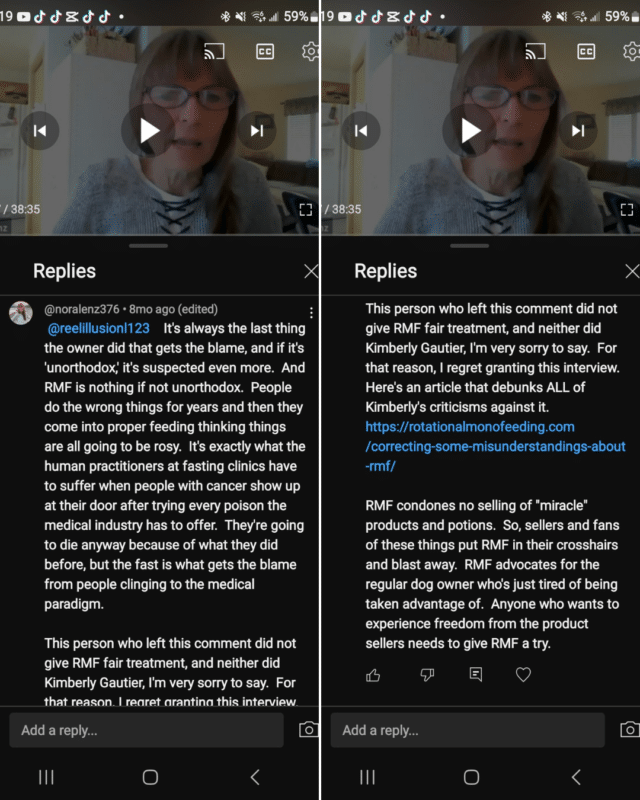


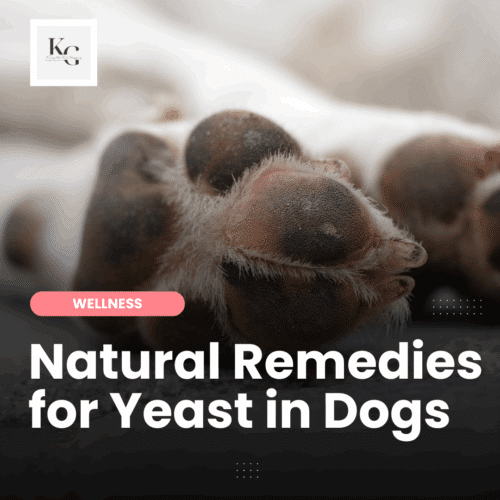
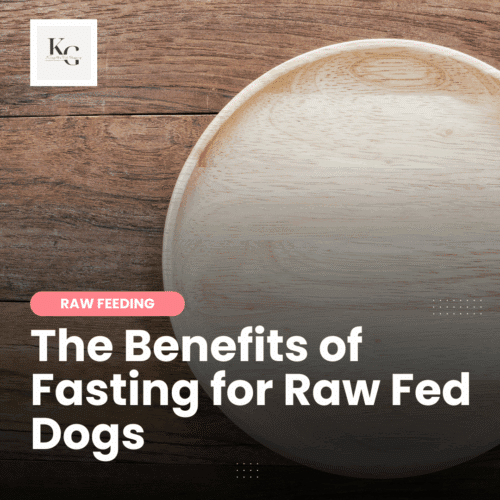
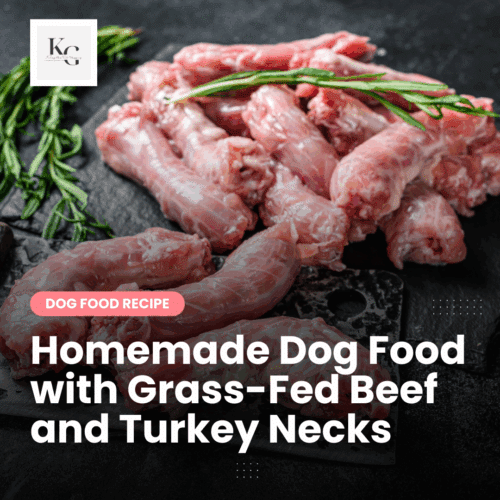
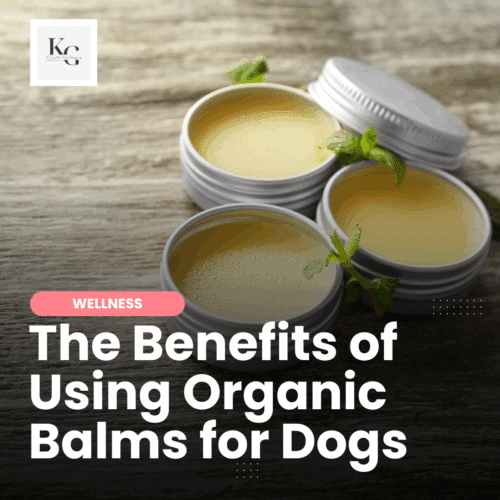

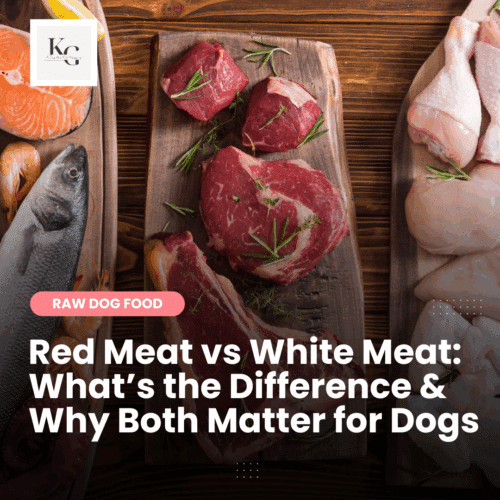
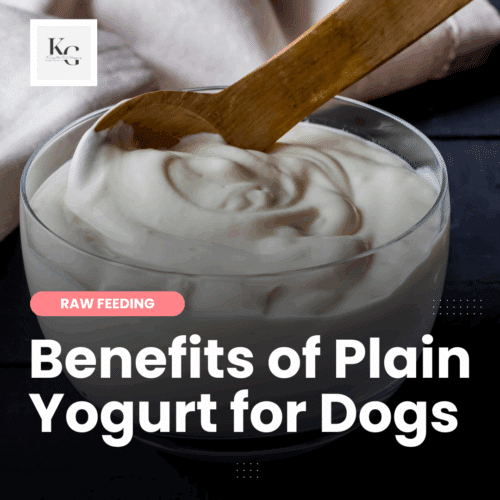


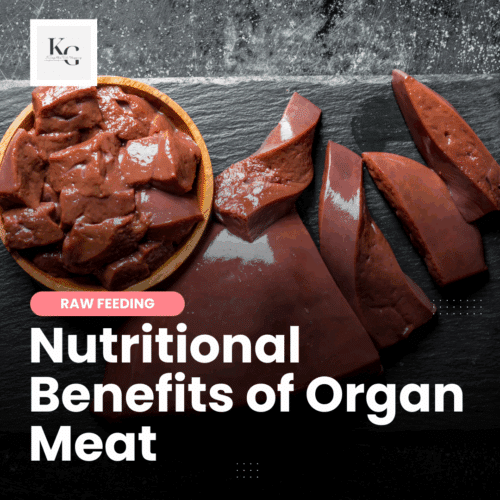


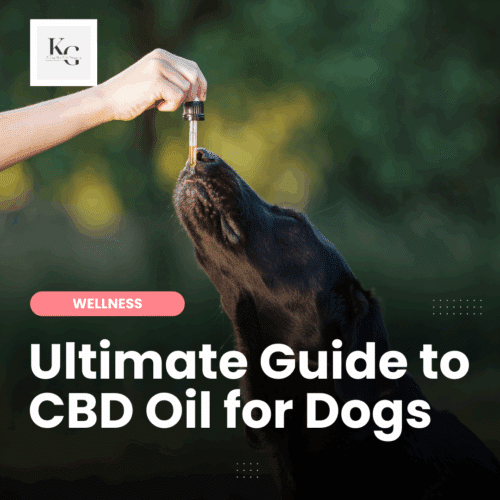
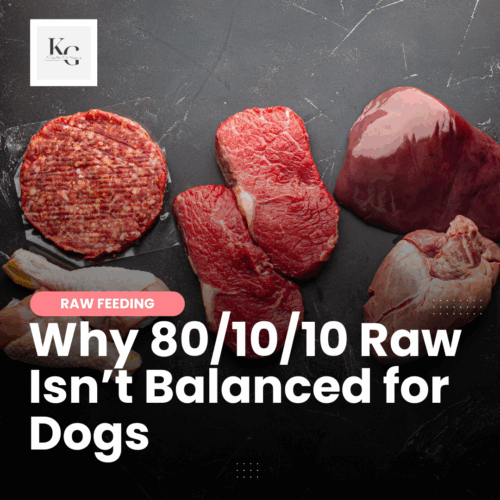
Hi Robin – I apologize for the delay in responding. Today, I follow a traditional raw food diet. It’s a blend of BARF and Prey Model Raw. I prepare food in large batches, starting with a mix of 80% muscle meat, 10% bone, and 10% organ meat (including liver, heart, kidneys, and spleen). I add a base mix by Dr. Harvey’s (Raw Vibrance), hydrating two cups for every 15 pounds of 80/10/10. I also add canned boiled oysters and organic kelp. It’s a blend I researched for years, developing it after much trial and error. I worked with a friend who is a nutritionist to refine it while keeping it simple for me.
With individual meals, I add eggs (sometimes raw, but mostly gently cooked), salmon oil or fatty fish (such as whole sardines, mackerel, or Atlantic salmon), and duck or chicken feet (or another small, raw, meaty bone).
At least once weekly, I fast my dogs. I feed them a heavy dinner, and then their next meal isn’t until 20 hours later, the following afternoon. And once a week, I fast on a modified diet of raw goat’s milk in the morning and evening.
I use supplements to support gut health and overall wellness. I’ve found that this routine has been the most effective for my dogs, resulting in healthier dogs and fewer veterinarian appointments.
Hello, I found your blog with a Google search. My dog has been on RMF or a variation since he was nine months old and he is now five. He was thriving until a few years ago when recurrent yeast based ear infections began. He did receive treatment from a vet as I don’t entirely agree with never ever going to the vet, unfortunately the ear issues are continuing. It’s not terrible. It doesn’t have discharge coming out of it. But he’s definitely favoring the ear by scratching constantly and shaking his head constantly. I stopped following RMF and switched over to the natural diet for dogs, which has some of the same principles, but promotes no cooked food ever. It also recommends increasing the feeding amounts. I have been under much pressure from my friend who thinks this is not a good diet for him and that he’s too thin. I’m considering transitioning him off of this, but I’m very afraid of causing any negative effects. My prior dog who was so very ill l, led me to this diet for my current dog. I could use a little guidance. How do you feed your dogs now? if you could reply, that would be great. Even an email would be amazing. Thank you so much for this article and your feedback.
Thanks for stopping by. I’ve made a ton of changes to my dogs’ diet thanks to what I learned from RMF, but, as members of the group were quick to point out, I wasn’t actually feeding RMF or giving it a fair try. What pull together ALL of the information I’ve learned over the years about dogs, I can’t adopt RMF 100% – there is no model that I can adopt 100%. All dogs are unique.
I am just looking into the RMF and yes there are many things that concern me, though you did address quite of few of those concerns..
I think one I am so unsure about is the yeast issue,,they say it is not caused by sugar when in fact it has been proved it is, and I have also proved to myself when my girl has carbs her yeast flares out of control, so feeding veg high in carbs would be a problem for dogs with yeast issues…
But i guess it could be substituted with lower carb veg.
Also the fasting one would be a no no here..she is an older dog and would not cope with the stress of it, so while I agree feeding as natural as possible and looking at the way wild canines eat, but as you so rightly pointed out, ours are domesticated…slightly different to wild.
Thank you for your info it has given me a lot to think about.
Thanks for the detailed comment. I won’t be continuing with RMF. I disagree with too many aspects of it and I see that is going to be an issue in the group so I’m going to go my own way and continue learning about canine nutrition. I think RMF has a lot of great ideas – the one thing that was a miss for me was that I don’t feel the group supports the fact that all dogs are different and while folks in the group may be experts at RMF, they’re not experts in my dogs.
When it comes to the topic of fat, please understand that I don’t feed factory farmed meat. I feed grass fed proteins that are locally sourced and lean. I add additional fat to my dogs’ diet because of all that I’ve learned about dogs living 20 years, 30 years, and more. One of my favorite dogs passed away a few years ago at 34 – she consumed raw milk daily and she got lots of exercise. One common denominator in all of the oldest living dogs is lots of exercise. I think that health issues in dogs are due to over vaccination, stressful lives, poor diets, and lack of exercise. My dogs have been raw fed for years, so they don’t have the health issues that are described in your group.
I do appreciate the introduction to a new raw feeding model and I look forward to further exploring this model and others as I learn more about raising healthy dogs.
Thanks again.
Thank you, Kimberly, for what I think is an objective, balanced and, for the most part, accurate description of RMF. I love the fact that you agree on the “balancing” part, because I think that is one of the biggest hurdles that keeps people from feeding raw. It was for me.
The only thing I will specifically comment on in regards to your blog, because it’s so important, is concerning fat. (There are a couple of other minor points but the purpose of my response isn’t to hone in on what ultimately may be nuances).
Fat, in the amounts that many people are feeding it, simply does not occur naturally in a dog’s/wolf’s diet. I’m puzzled as to why we’re even discussing this, and why so many are confused about this, even feeling the need to supplement with added fats. My, all RMF dogs, get plenty of fat in their daily diet, and that is after removing about 1/8 to 1/3 of a cup of fat, depending on what cut(s) I feed, for a 20-pound pup. Every time I feed meat. Think about that. There is absolutely no way that lean, wild prey, even with skin, will ever come with that amount of fat. And I feed only pasture-raised, gras-fed, organic beef and pasture-raised, organic chickens, along with the occasional rabbit, whole-prey quail, wild venison, etc. and so I know the difference very well between farm raised and wild.
Ultimately I think what we need to consider is how well dogs are doing on these different styles of feeding. We also need to accept the fact that, based on a recent survey, 80% of dogs come into RMF with either mild or severe health conditions, after pet owners have tried, without success, pretty much anything and everything else out there. Only 14% of dog owners reported their pet(s) to be in excellent health prior to starting RMF. (The missing 6% left the question blank).
95% of dog owners have reported some or significant improvements while on RMF, with 3% stating their dogs are about the same, and 2% having seen a worsening of the conditions. Again, let’s remember these 5% probably came into RMF after years of misfeeding, meds, supplements, etc. (The admins in the group deal with lots of Apoquel, Cytopoint and other heavily medicated pups, and these owners may just not be far enough into RMF to realistically see improvements).
If we break this down further, we can see that about a third of the dogs see improvements within 3 months, and about 20% not until at least 12 months into RMF. The balance falls in between. This is important information to keep in mind.
While this isn’t a scientific study (very few studies are properly conducted from a scientific standpoint, if any) it gives us a very good glimpse into the amazing results that RMF fed dogs experience.
I would love to see similar success rates coming from other types of feeding, where animals often start out healthy and end up sick, with some of these later fighting their way back to health with RMF. I will also add that Nora Lenz is the only author I know who is actually accoutable, and available, to her readers. Many other authors will simply publish something and never answer to anyone for the content they put out.
Again, Kimberly, I am thrilled that you took the time to take a deeper look at RMF and I hope your guy will continue to improve and remain in remission for many more years, be that with partial or full RMF concepts. Likewise, hopefully some of your readers, who wish to heal their beloved pets, or simply enhance their quality of life by preventing disease in the first place, will take the time to conduct their own, thorough research, with an open mind, focused solely on helping their pets.
Let’s all remember that ultimately this isn’t about us or our ego. This is only about the animals we all love and care for.